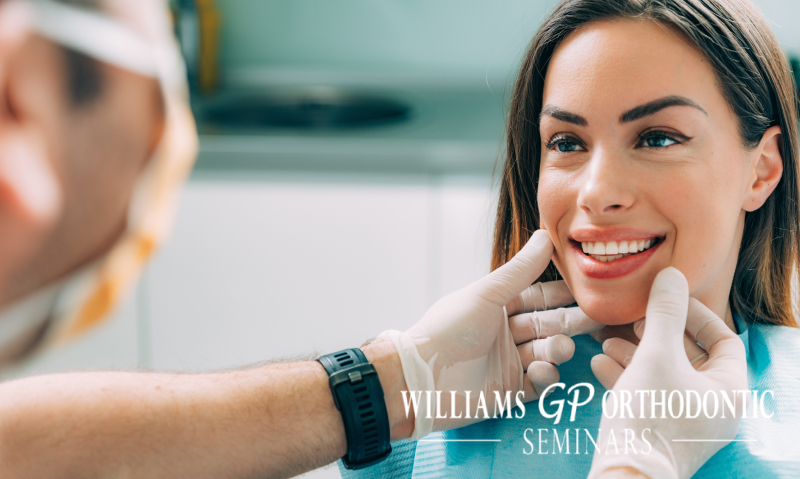We Must Understand Differences in Orthodontic Malocclusions
You probably notice that many of your patients have crooked teeth or a bite that is off, but do you understand the foundation of orthodontic malocclusions? There are several types of malocclusions that can affect how your patient looks, how they sleep and eat, and often their quality of life.
Once you understand the different types of malocclusions, you will have a better grip on what you should be looking for during a clinical exam and how to manage these treatment plans. Most importantly, if you are able to identify an orthodontic malocclusion, you can significantly improve someone’s overall cosmetic concerns and function.
Where does an orthodontic malocclusion come from?
There is not one single cause of a malocclusion. Instead teeth can be misaligned for several reasons. The most common include:
- Early tooth loss
- Congenitally missing teeth
- Airway obstruction
- Prolonged oral habits like thumb sucking
- Injuries
- Cleft lip and/or palate
- Poor oral care
- Poor alignment of the jaw
There are numerous types of malocclusions, but they all have variances that require different therapies and treatments. The three classes of malocclusion are:
Class I
Dentists love seeing a Class I occlusion because it means the bite is “normal.” The upper first molar sits in the lower first molar, although teeth may still be overcrowded or crooked. Typically, it is the least severe malocclusion and can be corrected by orthodontics. There are three types of Class I malocclusions: Type 1, when the teeth lean in toward the tongue; Type 2, when the lower teeth lean in and upper teeth protrude outward and Type 3, when the upper teeth are crooked and lean inward.
Class II
A Class II malocclusion is a common type of malocclusion, when the upper teeth protrude over the lower teeth. There are two divisions of Class II malocclusion.
Division 1: The maxillary incisors are all protruded and there is increased overjet. Some patients have a deep bite.
Division 2: The upper lateral incisors are tipped outward and the upper central incisors are lingually inclined.
Class III
A Class III malocclusion is where the lower jaw protrudes in front of the upper jaw. There can also be a crossbite on one or both sides, and this condition is typically known as an underbite. It is the least common malocclusion and requires braces and/or orthognathic surgery to correct.
Different Types of Malocclusions
Patients present with all types of dental issues, ranging from problems with their gums to crowding and tooth decay. Common symptoms reported, aside from the obvious clinical identification, are side effects like headaches, earaches, difficulty with eating or chewing, and TMJ problems. Many patients report sleep disorders like sleep apnea and snoring, because their jaw does not align properly.
Orthodontic treatment will depend on the severity of the malocclusion. You can easily help diagnose and manage your patient’s orthodontic treatment by taking an orthodontic course like the Basic Straight Wire Course with Dr. Brad Williams. It is a unique opportunity to get exposed to orthodontics, as it does not require the same depth of knowledge as an immersive dental school or residency program. General and pediatric dentists who take an in-person or online orthodontic course can then treat Class I and Class II malocclusions using straight wire orthodontics.
Some of the most frequently observed malocclusions include:
- Gaps and spacing: when there is too much space resulting in gaps between teeth
- Crowded teeth: a common condition caused by a lack of space. This results in overlapping of teeth and can make it difficult to effectively clean.
- Impacted teeth: when a tooth cannot erupt naturally and needs to be exposed to emerge from the gums.
- Overjet: a condition when the top teeth significantly protrude beyond the lower front teeth.
- Missing teeth: known as hypodontia and can affect the eruption of other teeth, spacing, and bite.
Treatment for an Orthodontic Malocclusion
Treatment length and type vary for patients depending on their malocclusion. For general and pediatric dentists who want to help their patients correct crooked teeth or protruding teeth, offering orthodontics will significantly improve their oral health. You can better understand orthodontics by taking orthodontic courses offered by Dr. Brad Williams. Through his series of lectures, you can apply straight wire orthodontics and understand the foundation of braces.
Once you have a grasp of orthodontics, you can understand the direction your patient’s treatment is going and decide whether you can manage their care. Your patients will be grateful for your knowledge, as orthodontics can greatly improve their overall quality of life.

